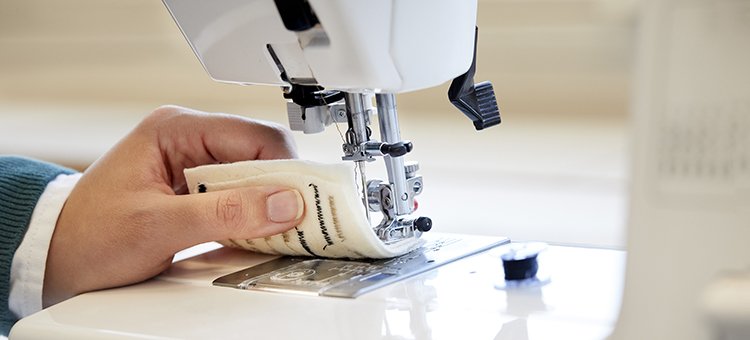
Smart nanocomposites from OCSiAl
The cellulose threads have been used in a thermoelectric textile that generates a small amount of electricity from body heat.

15th March 2021
Innovation in Textiles
|
Sweden
A thread made of conductive cellulose is paving the way for electronic textiles made from renewable materials.
A research team at Chalmers University of Technology has already sewn these electrically-conductive cellulose threads into a fabric using a standard household sewing machine to produce a thermoelectric textile that generates a small amount of electricity when it is heated on one side – for example, by body heat. At a temperature difference of 37 degrees Celsius, the textile can generate around 0.2 microwatts of electricity.
”‹“Miniature, wearable, electronic gadgets are becoming ever more common in our daily lives but currently, they are often dependent on rare, or in some cases toxic, materials,” said Sozan Darabi, doctoral student at the Chalmers Department of Chemistry and Chemical Engineering. “They are also leading to a gradual build-up of great mountains of electronic waste. There is a real need for organic, renewable materials for use in electronic textiles.”
Together with Anja Lund, a researcher in the same group, Darabi has been working with electrically conductive fibres for electronic textiles for several years, initially with silk, before moving to cellulose. The electrically conductive yarn is produced in a ‘layer-on-layer’ coating process with an ink based on PEDOT: PSS.
The production process for the cellulose thread has been developed at Aalto University in Finland. In a subsequent process, the Chalmers researchers made the thread conductive through dyeing it with an electrically conductive polymeric material. Their measurements show that the dyeing process gives the cellulose thread high conductivity which can be increased even further through the addition of silver nanowires. In tests, this conductivity was maintained after several washes.
“Cellulose is a fantastic material that can be sustainably extracted and recycled, and we will see it used more and more in the future,” said Professor Christian Müller, who has been leading the Chalmers research. When products are made of uniform material, or as few materials as possible, the recycling process becomes much easier and more effective, and this is another perspective from which cellulose thread is very promising for the development of e-textiles.”

Business intelligence for the fibre, textiles and apparel industries: technologies, innovations, markets, investments, trade policy, sourcing, strategy...
Find out more